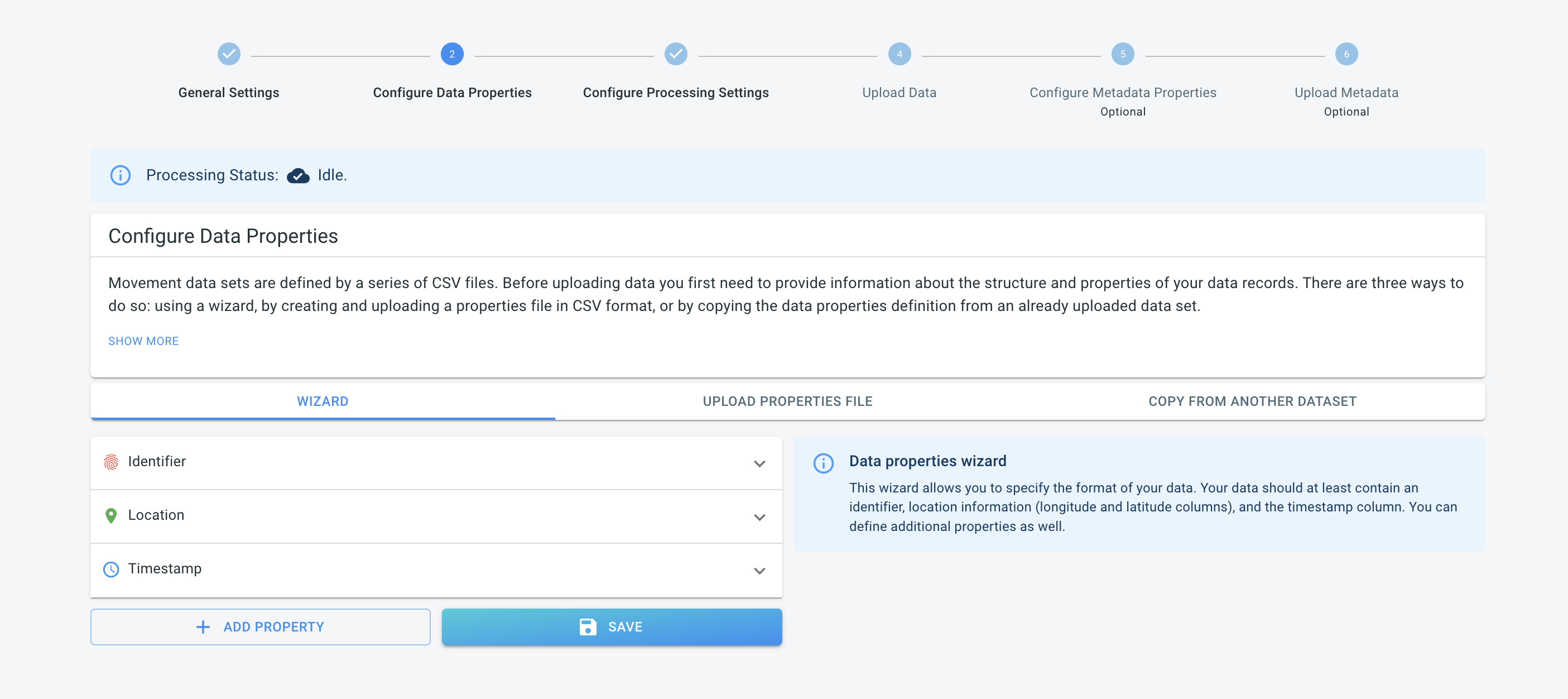
Available parts
- Goal
- Step 0: Obtain data
- Step 1: Create data set (current)
- Step 2: Define data structure
- Step 3: Configure processing settings
- Step 4: Upload the csv files
- Step 5: Use your data set
- Further reading
Step 1: Create a new data set
What is a data set?
When you upload data files (such as .csv or .parquet files) to the platform, we will store them in something that is called a data set.
Multiple data files can be added to the same data set.
You can have multiple data sets as well, for example:
-
One collection where the data file(s) contain the tracked position of people during an exhibition
-
One collection where the data file(s) contain GPS records of cars
In this case, you would end up with two data sets: a data set for each of those data file collections.
See this article for more information about data sets.
|
You can upload both
.csv and .csv.gz filesThe platform also accepts gzipped csv files. This enables you to first compress each individual file before uploading them to the platform, saving storage and upload time. Each file needs to be zipped individually. |
Step 1.1: Navigate to the 'New data set' page
by first clicking on the Data sets button in the left navigation bar
and then on the CREATE NEW DATA SET button in the top right corner of the Data sets overview page.
Step 1.2: Define your data set including the name, data type, and description
Fill in the form to provide a name and description for your data set, for example:
-
Name:
US Coast Guard AIS data 2020 -
Data type: Choose Movement Data as this data comes from vessels that are moving
-
Data file type: Choose CSV as we’ll be uploading
.csvfiles. -
Metadata file type: Choose CSV as we’ll be uploading
.csvfiles. -
Describes what is moving: Here you describe what exactly is tracked in your data set. Examples are persons, vessels, airplanes. In this case use vessels. As the AIS data from this tutorial contains the locations of ships,
vesselsis an appropriate choice. This name will be displayed in the UI elements of the different analytics pages, such as the Visual analytics page. -
Description:
AIS data from the US Coast guard downloaded from <a href="https://coast.noaa.gov/htdata/CMSP/AISDataHandler/2020/index.html">this website</a>.Note how you can use HTML tags to improve the description.
Once you filled in everything, press the CREATE DATA SET button.
This will bring you to the multistep page where you need to provide all other required information.
Each of the steps you will need to do next is represented by an item in the navigation bar at the top of the page.
You see that the first step "General settings" is already completed. If you click on it, a page opens where you can adjust the name, description and tracked asset type we just filled in.
Clicking on the different steps in the navigation bar on the top allows you to go back and forth, or do the steps out-of-order. Steps that are not possible to complete before another will be disabled.
Next part
Go to the next part: Step 2: Define data structure




